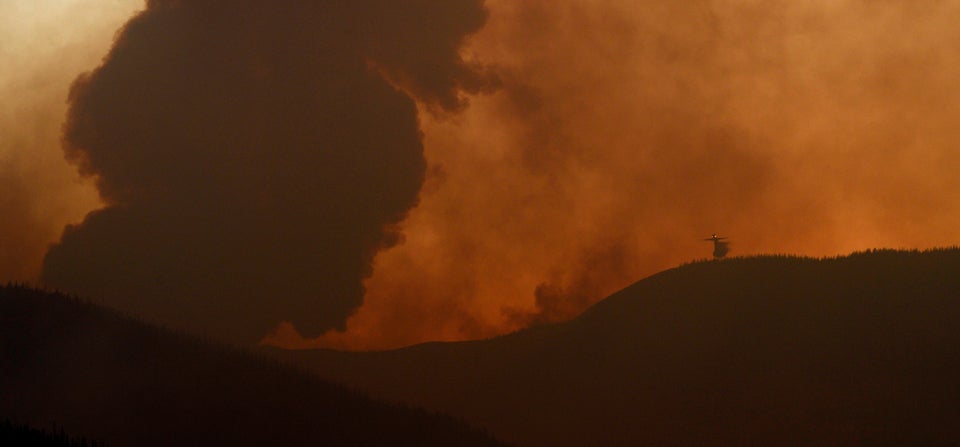As firefighting crews continue to tackle what has become the state's most destructive fire in Colorado history, a wildfire task force created by Governor John Hickenlooper has been at work drafting tougher limits for home development in burn zones.
Black Forest firefighting costs alone have already exceeded $5 million, 502 homes have been lost -- and that number is still expected to grow, according to El Paso County Sheriff Terry Maketa -- and two lives have been lost.
"If we don't get our arms around this problem now, it's going to run away from us," deputy state forester Joe Duda told The Denver Post on Monday. "Now is the time."
Duda is part of the 18-member task force that was launched last January by Hickenlooper in an executive order meant to review and improve post- and pre-wildfire issues like insurance coverage policies, forest health and preventative actions like prescribed slash pile burning.
According to Headwaters Economics, a nonprofit research group that focuses on land management and community growth in the west, federal wildfire costs have averaged more than $3 billion a year and they're only getting worse.
"Wildfire threat and protection costs are likely to rise because of climate change and continued home development," the study reads. "Currently, the majority of private wildlands are undeveloped; only about 16 percent of the (wildlife urban interface) in the West is now developed, and the remaining 84 percent is available for development. The potential development of these lands is a state and local responsibility, but their development would significantly increase the federal cost of wildfire protection."
Another factor that could help in the future is better forest care. Last year the governor banned prescribed burns after high winds in Jefferson County rekindled one out of control and sparked the Lower North Fork Fire that killed three and destroyed homes. Though the governor's executive order left that ban in place, it lifted it for slash pile burn operations which are generally done during wet periods.
"Although weather conditions across Colorado have changed over the recent months, for those Colorado residents living in the wildland-urban interface, there is still concern of disastrous wildfire," Hickenlooper's Executive Order says. "Pile burning operations in this area will reduce the risk of devastating wildfires, by reducing the hazardous accumulation of slash resulting from fuels treatment activities. These fuel treatment activities not only reduce wildfire potential, but work to increase the health of forests, by thinning forest strands and eliminating weak and diseased trees. Weaker trees that remain in the forest are prone to insect attacks and disease."
Last year, after what was then the worst wildfire in the state's history, insurers estimated that the wildfires caused at least $449.7 million in damage.
Director of Public Policy at Headwaters Economics Chris Mehl told 9News that many homeowners in wildfire-prone areas do not pay a premium for fire insurance.
"It's [firefighting costs] not yet at the cost of what floods are from hurricanes on the east coast," Mehl said. "But with the west growing in population, anyone who lives in the Front Range area is well aware that we're heading in that direction just because more and more homes are at risk."
As a result task force members are considering a state-run insurance program that won't burden city dwellers, allowing more prescribed burns and requiring homeowners to pay fees to help offset the costs of protection while living in burn zones.
The task force expect to present their recommendations during the next legislative session.
